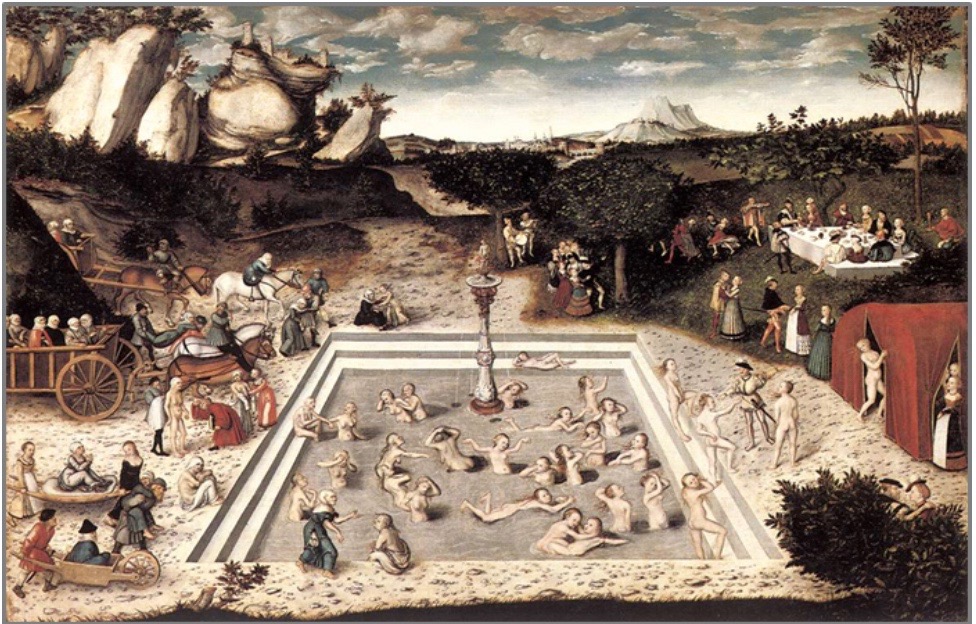Fountain of Youth (1546) by Lucas Cranach, the Elder Reprint permission by Staatliche Museen Berlin
How we can ensure that various senior citizens—those who belong to the “younger old” category (50-59, 60-69, 70-79) and those who belong to the older old (80+ years) category; those who are living together or alone; those who are full of vitality or fragility—can identify with images representing themselves so they continue to have access to information sources in a society that is increasingly digital?
A case study conducted by Loos (2013) in the Netherlands collected the images of older people from the websites of three senior citizens’ organizations in the Netherlands to gain insight into the ways these organizations represent their members. While the picture was clear (older people not having a white cultural background are a minority in all three websites) we still do not know yet what the impact of this mis-representation (visual ageism, Loos & Ivan, 2018) is on senior citizens.
For this reason in the project “The impact of pictures representing senior citizens as eternally youthful” 31 various Dutch senior citizens have been interviewed to ask how they identify with different kinds of pictures. This explorative qualitative study, conducted in 2018 and focusing on the role of age (younger old, older old), as well as the role of gender, civil status and health conditions, offers us insight into the role of images for the identification processes of a various group of senior citizens and help us to avoid the looming danger of euphoria and stigmatization by using a mix of images for digital information sources that do justice to the diversity within the older population group by adopting the principle of ‘designing for dynamic diversity’ (Gregor et al., 2002).
Method
A variety of stock photos were presented to older persons with different pensions, varying income levels, and differences in health and housing. Researchers asked 31 diverse older respondents if they could identify with the photos. For example, can an old man living alone in bad health identify with stock photo of healthy-looking couple drinking a cocktail?
Observations
In general, older people identify with stock photos that relate to their life stage, for example, where and how they live and relax. Organizations delivering products and services for older people in later life may be interested in the outcomes of this research. If they wish to be as inclusive as possible, they should take into account the diversity of ways the heterogeneous group of older people identify with stock photos.
See E.F. Loos, (2018). The organizational use of online stock photos: The impact of representing senior citizens as eternally youthful. Human Technology, 14(3), 366–381, http://humantechnology.jyu.fi/archive/vol-14/issue-3/loos for the results.
References
Gregor, P., Newell, A. F., Zajicek, M. (2002). Designing for dynamic diversity – interfaces for older people. In J. A. Jacko (Eds.), ASSETS 2002 The Fifth International ACM Conference on Assistive Technologies (pp. 151-156) Edinburgh, Scotland, 8-10 July.
Loos, E. F. (2013). Designing for dynamic diversity: Representing various senior citizens in digital information sources. Observatorio (OBS*) Journal, 7(1), 21-45.
Loos, E. F., & Ivan, L. (2018). Visual Ageism in the Media. In: L. Ayalon & C. Tesch-Roemer (Eds.), Contemporary aspects on ageism (pp. 163-176). Berlin: Springer.
Researcher:
Eugène Loos, Utrecht University
Funding
ACT-SSHRC
Research Area:
Critical Mediations
ACT Partner:
Utrecht University

